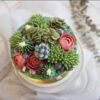Folk Paintings on Life and Beliefs: A Deep Dive into Traditional Art and Its Cultural Significance

Folk paintings are an integral part of a nation’s cultural heritage, offering a unique window into the beliefs, values, and daily life of the people. In countries like Vietnam, China, and other parts of Asia, folk paintings have been cherished for centuries for their ability to depict not only the ordinary lives of people but also their religious and spiritual beliefs. These artworks, passed down through generations, often serve as visual representations of folk culture, traditions, and the human connection to the divine.
In this article, we explore the captivating world of folk paintings related to life and spiritual beliefs. Specifically, we will focus on Vietnamese folk paintings, which are a prime example of this genre. We will examine the different types of folk paintings, their meaning, the cultural beliefs behind them, and how these art forms continue to thrive in modern society.
1. The Rich History of Folk Paintings
The origins of folk paintings can be traced back to ancient traditions and rituals. Folk art was created by common people, often as part of their everyday life, and was typically not influenced by the elite academic artistic norms of the time. Unlike classical art, which often focused on the portrayal of historical events, mythological themes, and figures of power, folk paintings were rooted in the experiences of ordinary individuals.
In Vietnam, folk paintings have long been a significant part of the culture. The country’s history of agricultural traditions, along with its deeply ingrained religious and spiritual practices, has played a pivotal role in the development of folk art. Folk paintings in Vietnam were often created by local artists, typically by hand, using vibrant colors and intricate designs. These paintings were displayed during festivals, in temples, and in homes, serving both as decoration and as representations of cultural beliefs.
2. Types of Folk Paintings and Their Cultural Significance
There are several different genres of folk paintings in Vietnam, each with its own set of themes, symbols, and purposes. Let’s explore some of the most prominent styles that portray life and spirituality in Vietnamese culture.
a. Đông Hồ Paintings
One of the most well-known forms of Vietnamese folk painting is Đông Hồ paintings. These paintings originated from the Đông Hồ village in Bắc Ninh Province, and they were originally created for use during the Lunar New Year celebration, also known as Tết. Đông Hồ paintings depict themes related to everyday life, such as family, nature, and work, but they also include images tied to spiritual beliefs.
The themes of Đông Hồ paintings often revolve around symbols of good luck, prosperity, and harmony. For example, the famous “Bà Cô” or “The Young Lady” painting symbolizes the idea of fertility, wealth, and abundance. Other popular motifs include roosters, which represent vitality and prosperity, and fish, which are believed to bring good fortune, especially for farmers.
These vibrant prints were typically hung on the walls of homes to ward off evil spirits and to invoke blessings for the family. The symbolism behind each figure or object in the painting was deeply connected to the daily life and the spiritual beliefs of the people.
b. Hàng Trống Paintings
Another significant genre of Vietnamese folk painting is Hàng Trống paintings, which originate from the Hàng Trống village in Hà Nội. Unlike Đông Hồ paintings, which are often simple and minimalistic, Hàng Trống paintings are known for their bright colors and more intricate designs. The subjects of these paintings tend to focus more on mythological and religious themes, as well as popular beliefs.
Hàng Trống paintings are often used to honor ancestors, deities, and spirits. The paintings are believed to possess spiritual power and are often displayed during major life events, such as weddings and funerals, or in temples. The artwork features various gods, goddesses, and mythical creatures, such as the Taoist immortals, Buddha, and dragon figures, all of which are meant to protect and bring fortune to the household.
Hàng Trống paintings also serve as a means of preserving the traditional Vietnamese belief in the balance between the material and spiritual worlds, where earthly life and the divine are interwoven. The colorful portrayal of religious figures reflects the high value placed on spirituality in Vietnamese society, with an emphasis on harmony and respect for the natural and supernatural worlds.
c. Sinh Tồn Paintings
Sinh Tồn paintings, or “Life of the Immortals” paintings, depict various immortal beings in Vietnamese culture. These immortals are typically deities or revered figures associated with wealth, prosperity, and longevity. The paintings often focus on the immortal gods of fortune, such as Phúc, Lộc, and Thọ, representing happiness, wealth, and longevity, respectively.
These paintings are not only religious but also symbolic of a collective desire for eternal happiness and prosperity. The themes of Sinh Tồn paintings offer insight into the spiritual aspirations of the Vietnamese people. These paintings were often displayed during major festivals and religious ceremonies, serving as both decorative and spiritual tools.
3. Symbolism in Folk Paintings: Connecting Life and Beliefs
The power of folk paintings lies not only in their aesthetic value but also in the deep symbolic meanings they carry. These paintings often serve as a spiritual tool to enhance one’s life and bring good fortune, as well as a reflection of the beliefs and values of the people who created them. Let’s take a closer look at some of the most important symbols found in folk paintings.
a. The Rooster: Symbol of Luck and Prosperity
The rooster is a prominent symbol in Vietnamese folk art, particularly in Đông Hồ paintings. It is believed to bring good fortune, prosperity, and vitality to the family. The rooster’s loud crowing is seen as an indicator of the arrival of morning, a symbol of new beginnings and a time of opportunity. As a result, the rooster is often associated with success and happiness.
b. Fish: Symbol of Abundance
In Vietnamese culture, fish are frequently featured in folk paintings, especially in the Đông Hồ style. Fish represent wealth, abundance, and fertility, and they are particularly important in the agricultural society of Vietnam, where they are seen as a symbol of plenty. Carp, in particular, is associated with transformation, and in folklore, it is said to swim upstream and turn into a dragon—a symbol of luck and success.
c. The Dragon: Symbol of Power and Protection
The dragon is a revered symbol in Chinese and Vietnamese culture, and it often appears in Hàng Trống paintings. Dragons are viewed as divine protectors and are believed to bring good fortune and prosperity. In folk art, the dragon is often paired with other symbols like the phoenix to represent balance and harmony between the material and spiritual worlds.
d. Lotus: Symbol of Purity and Enlightenment
The lotus flower is a symbol of purity and spiritual enlightenment in Vietnamese culture, and it appears frequently in religious-themed folk paintings. The lotus grows in muddy water, representing the ability to overcome challenges and achieve inner peace and spiritual awakening. Its inclusion in folk paintings serves as a reminder of the importance of spiritual growth amidst the hardships of everyday life.
4. Folk Paintings as a Reflection of Vietnamese Society
Folk paintings provide a vivid depiction of Vietnamese life and spirituality. They reflect the country’s agricultural roots, its deep respect for ancestral worship, and its close connection to nature and the supernatural. These artworks are not simply meant to adorn walls—they are believed to have a profound effect on the lives of the people who display them.
Through their depiction of gods, goddesses, animals, and symbols of wealth, prosperity, and longevity, folk paintings serve as a spiritual bridge between the material world and the divine. They remind viewers of their connection to the spiritual realm and offer guidance and protection in their daily lives.
5. The Enduring Legacy of Folk Paintings
Despite the advent of modern art and changing times, folk paintings continue to hold a special place in Vietnamese culture. Many contemporary artists have taken inspiration from these traditional art forms, and they remain a beloved part of Vietnam’s cultural identity. These paintings are still widely used for religious and ceremonial purposes, and they are also appreciated as fine art that embodies the richness of Vietnamese heritage.
Whether displayed in homes, temples, or businesses, Vietnamese folk paintings serve as powerful reminders of the importance of beliefs, culture, and tradition in shaping the lives of the people. Through the vivid colors, intricate designs, and symbolic imagery, folk art connects the past with the present and continues to inspire those who seek prosperity, harmony, and good fortune.
Conclusion
Folk paintings, with their rich symbolism and cultural significance, offer a glimpse into the spiritual and everyday life of the people who created them. In Vietnam, these artworks have long served as a way to connect the material world with the spiritual realm. Through the depiction of symbols like the rooster, dragon, fish, and lotus, Vietnamese folk paintings express a deep respect for the forces of nature and the divine. Today, these paintings continue to play an important role in preserving the country’s spiritual and cultural traditions, while inspiring a new generation to embrace the values of prosperity, harmony, and enlightenment.

